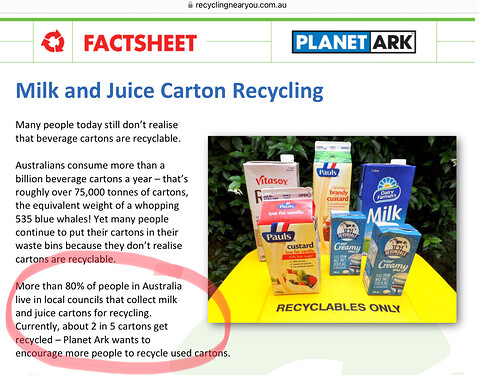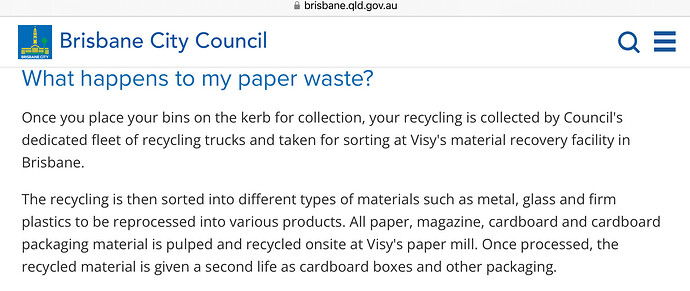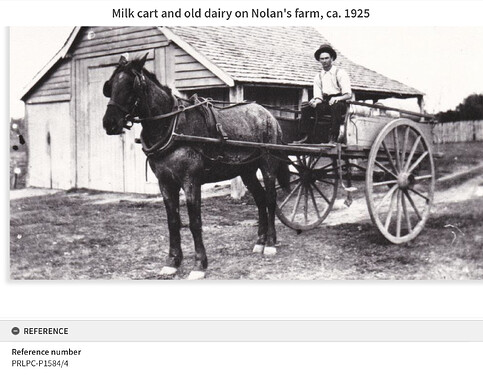Even bagasse cardboard cartons would need a internal impermeable layer to stop the liquid content from saturating the cardboard and stopping outside contaminants from more easily permeating the container e.g. bacteria, fungi, and viruses in the outside environment. I would think mostly this barrier would be plastic, though I guess a wax might also be used if one was suitable. As bagasse is quite a renewable resource it does hold some reasonable environmental benefits, though the difficulty in separating the biodegradable resource from the non biodegradable content once the container is finished with means that plastic would still often end up in the landfill and in the environment. Reality is that cardboard as long as it breaks down can he seen as a resource that is circular in the environment, only it’s manufacture and processing may be less or more harmful depending on the treatments needed to create the item. Sugarcane production is a monoculture, this is similar to wood production for paper industries, again often monoculture production, bamboo would also be similar if an area becomes dedicated to the production of the crop.
Does anyone know the total GHG environmental footprint of each litre of milk purchased and consumed?
It’s factual that cattle are significant emitters of methane a very damaging GHG. Agriculture also consumes fertiliser, fuel and farm equipment. Each of these are responsible for added GHG emissions.
From the farm gate there are transport, processing and packaging. Each of these items adds a GHG component. Finally there is the transport to retailer and retailers GHG footprint (energy, storage, staff etc).
As consumers we make a further contribution in how be collect, store and dispose of the product (packaging) at end of life.
Some data suggests the packaging may be a far less important problem to solve, IE (around 5% or less of the attributable GHG emissions per litre of milk), given the high GHG cost of milk production from paddock to glass.
A little bit of Asparagopsis armata seaweed in ruminants’ diets and they stop emitting so much methane, this is because like some other seaweed which can also be used, it contains bromoform. Bromoform works by inhibiting the efficiency of the methyltransferase enzyme. Some are investigating adding to the feed of the ruminants E. Coli that had the gene from the algae Corallina pilulifera that codes for the enzyme bromoperoxidase inserted into their genetic structure. The possible outcome of the use of either process is up to about a 98% reduction in the methane produced by beasts without any reduction in quality of the milk or protein the beasts produce.
Back in the day, the milko used to deliver milk in 1 pint glass bottles. Clean empties were taken back by the milko. Home deliveries stopped in our area in the late 1960s, I think. From memory, milk was bought from shops/supermarkets in 1 litre cartons after that until plastic bottles largely took over. Recently I have had to change to lactose-free milk and buy it in 1L cardboard cartons. Fresh cartons are accepted for recycling in my area, and by most councils in Australia according to Planet Ark. Foil-lined long-life cartons are accepted by many councils as well. Liquid paperboard apparently makes up about 88% of a Tetra-Pak 1-litre fresh milk container and is recyclable.
If only about 14% of single-use plastic in Australia is recycled, it would be interesting to know if that also applies to plastic milk bottles (and to plastic bottles collected by Container Deposit Schemes).
The powdered milk that I buy is an Australian product; as I said, I find the taste just fine; and it saves me having to cart a ute-load of plastic bottles to the tip every couple of months, as I don’t have kerb-side garbage pick-up. It’s my choice. But I do know the yearning for proper-tasting Australian food when you can’t get it.
One of the many many shopping conundrums that give me a headache every time I go to the supermarket. The argument against glass is of course the heavier weight - therefore more fossil fuel to deliver, BUT plastic is in the world forever - or at least for an extremely long time and it’s building up.
Have you done the maths on the weight of plastic to volume of product? I am curious. I have always gone with the biggest container I can get, thinking that the volume of plastic/glass/metal has to be less in relation to what it contains - but perhaps I should have checked more carefully?
Also does anyone know about the recycling of the cardboard and plastic cartons? Which of the options leaves the ghastliest mark on the world?
This is a very good question. So many recycling schemes and pollution saving products and management systems do not supply enough useful information for the average person to have some understanding of whether the claims are true or if one method is better than another. I suspect many of us who are inclined to take some action to save the environment either give up or pick something that feels good at the time and hope for the best. This uncertainty is the basis of some greenwashing.
The answers we seek can often be found (after checking the source is reliable) on line. For cardboard drink containers it appears consumers are a big part of the problem. Plastics including rubbers add an extra dimension given their persistence once free in the environment
Assume PlanetArk may provide answers on several of your other questions.
When it comes to agricultural derived food products.
I found numerous sources that consider paddock to supermarket shelf. These provide a more informative view of the true impact of one’s choices. It’s possible to say for many products the ecological footprint of the packaging and transport of products is not as significant as all the other costs.
Two examples that may help to illustrate how it can be:
‘https://publications.csiro.au/rpr/download?pid=csiro:EP103907&dsid=DS2
A related aspect makes an answer to the question imprecise at best because every council does its own thing. Some take waxed cardboard containers, others do not. AFAIK all take plastic and glass bottles. So even if waxed cardboard containers might be better for the environment, if they do not get recycled and put in land fill how does that balance out?
A question then for each council. It would be informative to know if the 20% which do not accept cardboard drink containers also do not recycle plastic drink containers and bottles. More a logistics and cost decision than any other reason.
I can relate for Australia’s largest as follows.
Similar for Sunshine Coast.
thank you so much. will read very carefully.
This will only continue to exist in the short term. As packaging and recycling will be nationalised both through the Australasian Recycling Labelling system, National Waste Management Strategies as well as Resource Recovery Industry policies, no matter where one is in Australia, there will be consistency in recycling.
We only ever buy powdered milk and mix it up as needed. Saves carrying the extra weight home.
At first our son refused to use the powdered milk till I did a blind taste test and he selected one which he said was much better than the other. Turned out that was the powdered milk.
Once upon a time one walked to the dairy with a galvanised iron milk can and got it filled. However, the problem was in keeping the can sterile. This took effort, hot water and soap. Reusable glass milk bottles had the same problem. Strong chemicals were needed to sterilise the bottles. Added to that environmental issue was the fuel burnt carting the weight of all that glass back and forth. So now have plastic bottles. Most of what goes into our milk bottles is water. Why are we moving all this water around. If we could convince people to use powdered milk, the cost of milk deliveries and the associated environmental degradation will be greatly reduced. The nutritional value of powdered milk is just as good as pasteurised liquid milk. In my younger days, everyone had powdered milk in the pantry just in case. Some used it exclusively. Some countries still do. Unfortunately, we Australian would rather see our environment further degraded than to suffer drinking flat whites with a boiled milk taste.
According to my dad we were once more environmentally aware, depending on your point of view. Powered by renewables. The motive power is self replicating (assuming a matched pair). Technology even Musk has been unable to achieve. ![]()
Image courtesy of City of Moreton Bay,
Note one delivery option was dispensing the fresh milk to your personal jug or container from the rear of the cart.
I assume that these costs you speak of are the GHG and air pollution produced by ICE transport, if I have that wrong please correct me.
I don’t see why you pick milk to save carting about water. Just about everything we drink is mostly water and much of fresh food is too. There are much bigger targets for altering behaviour than milk, how about bottled water which sells more volume than milk and where both the transport cost and the container pollution could be eliminated by drinking tap water. In comparison it is going to be hard to explain to milk drinkers why they are hit.
If you are going pick winners or losers you need to do the sums and show that the assumed savings are quantifiable, significant and well targeted. You have supplied no numbers and, for example, left out the energy cost of dehydrating milk altogether.
Then there is question of deciding which products ought not be transported to save on the environmental costs of moving them. I think it is far better to alter the way transport is powered - electric vehicles and non FF power generation. Once done it applies to so many human activities not just selected products.
Here there are problems. The first is simple; this is a false dichotomy, there are many more than two possibilities, it isn’t an either/or choice.
The second is back to the question of making policy about individual products. We saw how easy it is for contrarians to seize on specifics and get traction by seeming to defend individual choice (EVs will ruin the Ozzie weekend). If you really want to generate huge volumes of negative press and bootless controversy tell coffee drinkers they can’t have fresh milk with their drug of choice. Manufacturing controversy is usually the tactic of those who want to prevent or at least delay change.
To me this thread, whether about containers or the content, is missing the mark on the best way to reduce pollution and environmental harm. There will need to be sacrifices made, getting off FF power sources will cost a fabulous amount and all of us have to pay for it but it must be done and all share to some degree. However, telling consumers of specific products that they have to sacrifice is a failure from both practical and change management viewpoints.
I don’t have an issue with much of what you say but the issue here is, “Milk packaging and the environment”.
![]()
![]() A great find! However, having been in that same position as a youngster, except it was a sleigh not a milk cart, I can confirm that the methane exuded by the rear of a beast of burden, is not inconsiderable
A great find! However, having been in that same position as a youngster, except it was a sleigh not a milk cart, I can confirm that the methane exuded by the rear of a beast of burden, is not inconsiderable ![]() and therefore not entirely renewable
and therefore not entirely renewable ![]() .
.
They jump up and down about renewables. How about going back to glass. As they used to say “Good things come in glass.”
If the full cost of disposable packaging had to be paid reusable might become more competitive, as it is industry privatises profits and socialises costs.
If going down that pathway it would be very unfair to only apply it to milk bottles.



